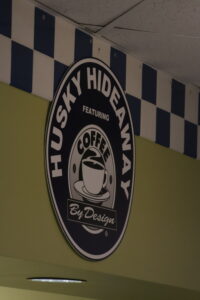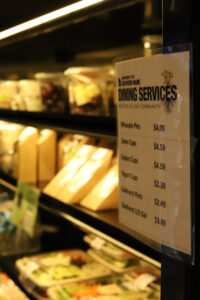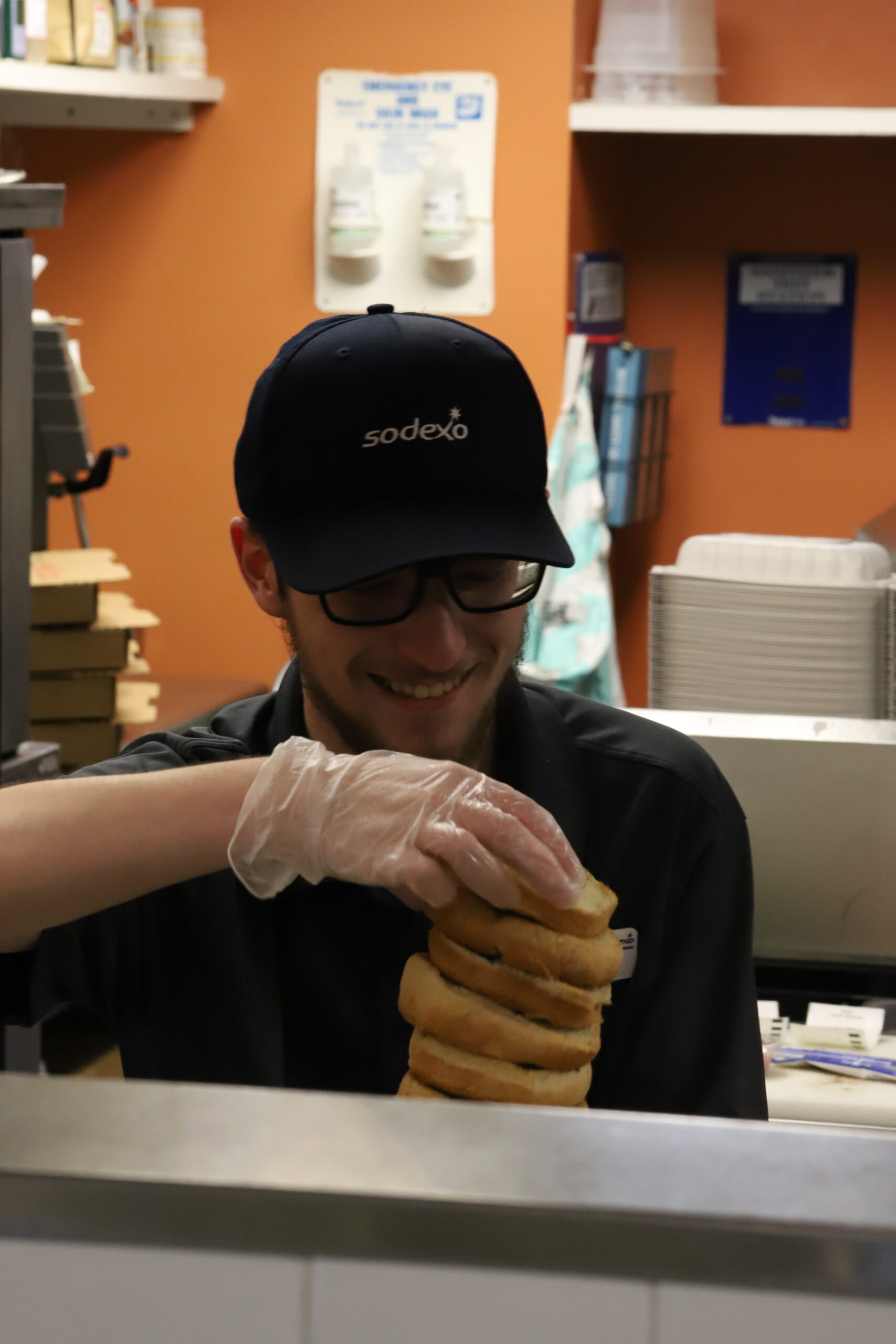Let me ask you a question. After a long day of classes and repetitive activities that only seem to be getting worse and worse, have you ever wanted to just grab food to go, return to your dorm, and relax? In dozens of college communities throughout the nation, this is a possibility and for some a reality. USM, however, is in limbo. Our quaint college campus is far beyond the point of making that a possibility but barely crosses the threshold that classifies it as a reality.

That isn’t to say that USM pales in comparison, because it doesn’t. What is being said is that the meal exchange program, which officially began in 2021 for the benefit of student athletes and those who had late night courses, has since evolved into something more. Something unforgettable. Something unrecognizable.
Before we get into the nitty gritty of when the issue occurs, who it affects the most and why it is being discussed, let us first delve into what the Husky Hideaway is. The Husky Hideaway, known as “The Crack” to a majority of the student body, resides in the lower levels of Brooks Dining Hall on the Gorham campus. It is situated in a little crack between the Husky Den and the Student Engagement and Leadership office. This common space is part convenience store and part fast food restaurant. Meals are typically prepped, cooked and served from the grill, the fryer, the chinese station, and the wrap station. A little known fact is that if you are seeking healthy fruits and veggies and/or cold sandwiches, you can use your meal exchange on products from the cold station shelving unit, located adjacent to the Pepsi products fridge.
The meal exchange program was officially introduced to the Husky Hideaway in the fall of 2021; every year since then has seen both compliments and complaints. The latter may be due, arguably, to the quality of the food and the questionable service from the electronic app that only works fifty percent of the time. Prior to the fall ‘22 semester, Sodexo, on behalf of the University, ran its online meal ordering system through the Bite app before changing to the Everyday app. Although yes, the Bite app had its pros and cons with every feature it presented, there are many this academic year who have expressed their own dissatisfaction with the new Everyday app.

This new app has numerous flaws that keep students from ordering meals from any of the University’s dining options, with or without meal exchange. It has prevented several students from easily accessing a meal at night because of the limited time slots.
Tristen Wintle, a student supervisor, explained that the meal exchange program was initially founded in support of student athletes and those with late night classes, so everyone could have a chance to have a cold or hot meal near the end of their day. With time, more and more people found that the Husky Hideaway’s meal exchange was less stressful than having to sit in the dining hall, potentially alone, just to have a filling meal.
Wintle expressed that in the past, he was in constant communication with upper management about finding a way to prioritize student athletes and those with late night classes so they would be on a first-come first-served basis for the limited amount of time slots that can be fulfilled per hour.
With the new app, there are about eight time slots per every fifteen minutes, for each of the stations. The previous app included about twelve slots for every fifteen minutes. It was soon made clear that when the app’s slots fill up, there is no chance to order food that night. It is simply because the few staff who are working every day are so overwhelmed with the amount of orders they receive that it can be difficult to stay on top of every order. This goes to show that even if you walk up to the register and explain how you haven’t been able to eat and the app isn’t letting you order, nothing is going to be sped up for you. By adding your order, their “to-do list” just became fifteen minutes longer.
When asking several students about their experience with the Husky Hideaway, a question was presented: “Do you believe the University would benefit from extending the hours of either the meal exchange or the dining hall?” This question did not disappoint, to say the least. A freshman explained that it would be beneficial to extend the hours of Brooks Dining Hall so that it could better accommodate student athletes and those who get out of class later, thus leaving the meal exchange open to anyone who desires it. A junior explained that extending the hours of any of the two would “positively” affect the student body by granting more access to meals that are supplied to them through the meal plan that they are required to pay for in order to have access to a healthy meal. A student employee who was asked the same question explained that it wouldn’t make any sense to keep it open any longer, because “practices don’t go until ten” and it is at that point that “students need to plan ahead” in order to be best prepared.
One student athlete I spoke to explained that having the ability to order meals on-the-go through The Crack gives them “flexibility” in their schedule as they are often unsure if they will need to “see a trainer” after practice. They also added that sometimes it can be difficult because of the “online ordering system,” and that if you wait too long, you might be out of luck.
Meanwhile, I turned to the anonymous social media app known as Yik Yak and asked the community for “honest thoughts on The Crack and the Everyday app/meal exchange.”
Students explained how the app is “super glitchy” and there are “too many issues.” Someone explained how last year’s app was “much more effective” for ordering and how having meal exchange all day “would be nice” compared to the couple hours it runs Monday through Friday.
Others expressed how “the app from last year” was significantly better but at the same time how the Everyday app is “kinda shit” but “better than the other app.” Finally, some posts said that the staff are overwhelmed, and if you don’t order quickly enough you won’t be able to order anything. Some students have explained that they would rather go hungry that night because of how long the waits can be.
In conclusion, I’ll explain what some people experience when they go to order from the Everyday app. Let me set the scene. You want a chicken quesadilla with a chocolate chip cookie and a Pepsi! It is around 8:30 at night and you just got out of a late night lab that has both physically and mentally drained you! You are excited for that 9:20 p.m. pick up time but even more excited to have a warm meal and a relaxing evening! Suddenly, trouble ensues when you realize the app won’t let you place an order and you haven’t had a proper meal in several hours. Unsure about your next steps, you wonder, “do I not eat or am I gonna have to break the bank on a college student’s budget?” all because you can’t order a meal.
This, unfortunately, is a reality many students and student athletes have to work around when it comes to planning out the day. When I was gathering research and writing this piece, I pondered both the benefits and disadvantages of longer hours for Brooks and the Meal Exchange. Yes, there are several clear-cut disadvantages to longer hours, including, but not limited to: spending excess funds on labor, having to purchase more ingredients in bulk, and even higher levels of exhaustion for the employees who do spend their spare time in these establishments.
I do believe prolonging the hours of either the Dining Hall or the Meal exchange would be beneficial to this college community, because student athletes tend to have later practices, there are dozens of students enrolled in late night courses, and many students stay up later than most in order to be best prepared for the future.
I reached out to the upper management of Sodexo, on campus, for comment on the Husky Hideaway and Brooks, but have received no response.

